The conversation started innocently enough. Penny Pawl, Napa County (CA) Master Gardener, was chatting with me about soldier flies: ominous-looking, wasp-like creatures who, along with their grubby larvae, might be populating your worm bin or composting bin. You can listen to what she had to say about that in Episode 214 of the Garden Basics with Farmer Fred podcast.
Or, read a previous edition (July 1, 2022) of the “Beyond Garden Basics” newsletter where we talked in depth with Sacramento County Master Gardener Susan Muckey about her take on soldier flies.
My chat with Pawl then veered into the worm bins that she uses on her property. The collection, she said, included four African Keyhole Gardens, with worm bins. What??? My ears perked up. And we were off to the races!

Penny Pawl is certainly a very inquisitive gardener. When she heard about the African Keyhole gardening method, she had to try it for herself. And as you heard in today’s newsletter podcast, hers are a roaring success. So much so, she now teaches classes in African Keyhole Gardens in Napa County.
So, what is the history of African Keyhole gardens? Pawl explained them in a column for the Napa County Master Gardeners, entitled “African Keyhole Garden - Great Garden Idea.”
“A so-called keyhole garden bed has a dead end opposite the opening. At the dead end is a compost bin. More than 20,000 of these have been built in Africa.
The Texas Master Gardener Association has held a number of workshops to promote this type of garden. There are also standardized plans. Their version is a six-foot-wide garden bed with a twelve-inch-wide bin made of chicken wire in the middle. The gardener fills the bin with compostable material such as moistened newsprint, cardboard, dead plants, kitchen waste and red wiggler worms, the same components of a worm bed. The concept is that the worms will gradually decompose the material and their castings will nourish the soil and plants around the bin.
For mine, I decided to use an old garbage can with holes drilled in it. The garbage-can lid keeps out pests and any creature looking for a warm nest. I created the planting bed with building blocks set three high and cemented in place.
Alas, I had a big problem with gophers, and I needed to win that battle. So this fall, when it was time to rework the soil, I put a layer of hardware cloth on the bottom. The hardware cloth helps to keep the gophers out. It won't last forever, but it will foil the varmints for a few years. Then a mixture of clean cardboard and soil was placed over the hardware cloth. Since the bed was already in a square keyhole shape, I added the garbage can and put soil around it to hold it in place.
I fill this garbage can with the same things I put in my worm compost beds, including red wiggler worms. I have been watering it and feeding it for a few weeks to try to get it working. Eventually, the liquid and castings from the worms and other insects will work its way into the new bed areas and fertilize the soil from below rather than from on top.”
Hunt County (TX) Master Gardener John Sanger explained more about the nuts and bolts of building an African Keyhole Garden for gardeners in hot, dry climates in the Hunt County Master Gardener Newsletter, “On the Grow”:
“The keyhole garden was developed in sub-Saharan Africa to help people grow food in hot, dry conditions – much like we have here in Texas during the Summer months. It is very efficient at holding moisture and retaining nutrients. The keyhole garden is essentially a round raised bed garden built on a compost pile with a central compost basket. The keyhole is a small aisle on one side of the circular garden that enables the gardener to reach the compost basket to add to it or turn it. It also brings the gardener closer to the center of the bed to reach plants more easily. Keyhole gardens get their name from the appearance of the garden as viewed from above.
The keyhole garden can be made of anything that can contain the soil. The ideal size for maintaining moisture is about 6 feet in diameter. I like the garden walls to be about two feet tall, as I like to tend the garden from a standing position. People use wood beams, cinder blocks, stacked stones, fencing material, even wine bottles and concrete for their garden walls.
To build the garden, lay out a 6-foot diameter circle on the ground. Keep in mind that if you plan to angle your materials inward for strength, you may want to start with a wider base to allow for that angle so that the top of your garden is about 6 feet across. The central compost basket can be a 1-foot diameter cylinder of hardware cloth that will extend about one foot above the final soil level. On my gardens, a 48” wide roll of hardware cloth was the perfect height. Secure the basket with wire and cover the exterior with weed block, burlap, or other permeable fabric. Lay out where you want your keyhole and move your garden wall materials to create an aisle that will allow you to stand near the center of the bed to reach the compost basket.
The keyhole garden should be lined with wet cardboard, and then filled with alternating layers of brown and green compost. Browns include lots more cardboard and dry leaves, and greens can include green, leafy material or manure. Alternate layers until the bed is almost full, then top with a rich planting mix. Plant the bed densely so that the canopy of foliage will shade the soil and then add several inches of mulch around plantings. Put compostable materials into the compost basket regularly. When watering the plants, also water the compost basket so that the water will leach nutrients into the surrounding soil. During the hottest months, some gardeners build a frame so that shade cloth can be hung over the garden.
If you want to maximize crop output in your vegetable garden even during the hottest and driest months, try a keyhole garden. It is a versatile and efficient design which is easy to maintain and can provide a family with a year-round abundance of vegetables.”
As Pawl mentioned in today’s newsletter podcast, ready-to-use, African-style Keyhole Gardens are available from many retail sources, including Amazon.
However, the whole original concept of the African Keyhole Garden was to implement a productive garden for those who couldn’t afford much and wanted to use easily obtainable materials. For more information about building one yourself, check out the “Field Guide to How to Build a Keyhole Garden” with Dr. Debbie Tolman. Do an internet search for “African Keyhole Gardens” pictures. And you may find an image of one that appeals to your senses…and budget.
Thank you for listening to the Garden Basics with Farmer Fred podcast! It’s available wherever you get your podcasts. Please share it with your garden friends.
As an Amazon Associate, I earn from qualifying purchases from some of the underlined links in the newsletter. This is how I am trying to keep this a free newsletter. And as long as you buy whatever you want from Amazon using any of those links to get into the Amazon site, I get a few pennies. Thank you.
Thanks for Subscribing and Spreading the Word About the Beyond the Basics: The Garden Basics with Farmer Fred newsletter, I appreciate your support.
Fred Hoffman is also a University of California Cooperative Extension Master Gardener in Sacramento County.










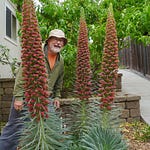

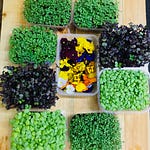
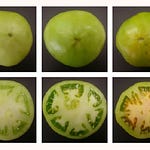

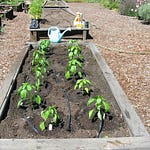
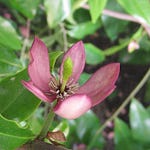
Share this post